Disk Operating System
DOS, or Disk Operating System, holds a significant place in computing history as one of the pioneering operating systems. Initially developed by Microsoft, it became ubiquitous in the 1980s and early 1990s, serving as the primary interface for personal computers. Characterized by its command-line interface, users interacted with DOS through typed commands, navigating file systems and executing programs. Despite its simplicity, DOS provided a robust platform for software development and application execution, laying the groundwork for the digital revolution. Its influence persists in modern computing, as DOS principles underpin many aspects of contemporary operating systems.
PTSource MiniVMDOS
PTSource MiniVMDOS is evolution in the lineage of DOS operating systems. This modern iteration integrates transparent web and network access seamlessly into its familiar command-line interface, empowering users with unparalleled connectivity. Moreover, it introduces native support for printing to Windows printers, streamlining document management across platforms. With robust network support, users can effortlessly collaborate and share resources in real-time, enhancing productivity and efficiency. Additionally, this innovative DOS OS introduces a multiuser environment, enabling concurrent access for multiple users, fostering collaboration and facilitating shared computing resources.
Screenshots
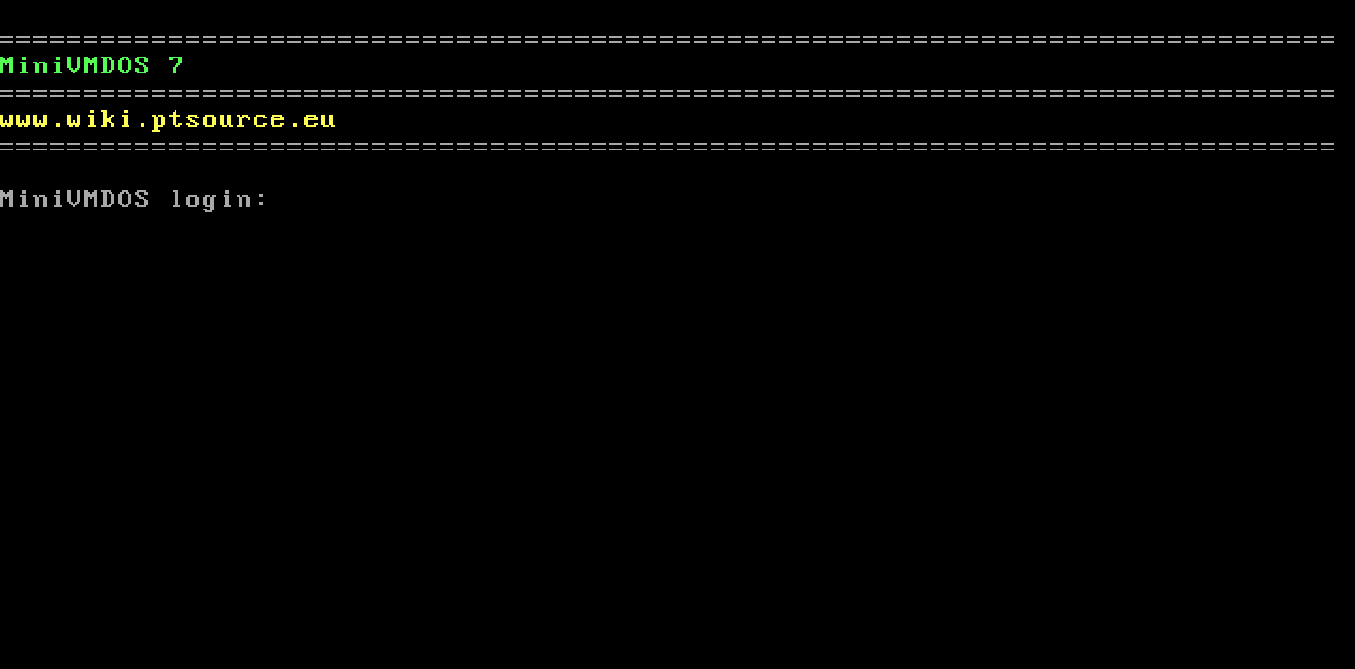
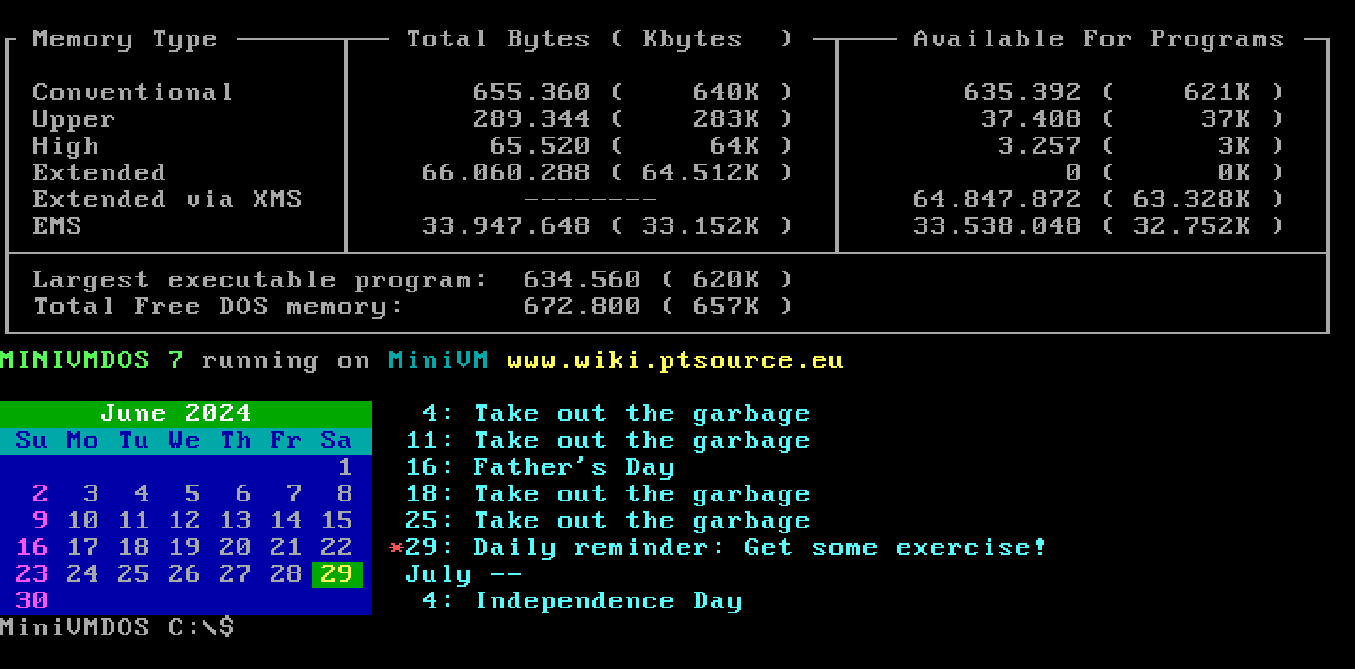
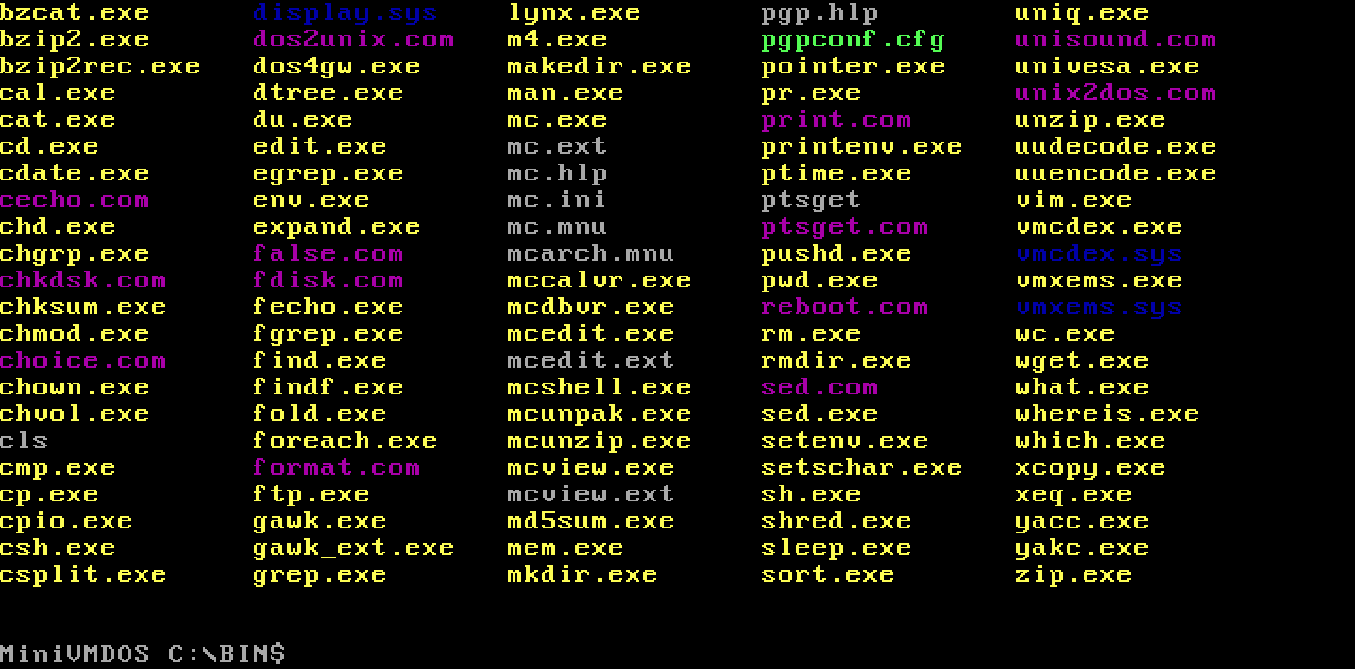
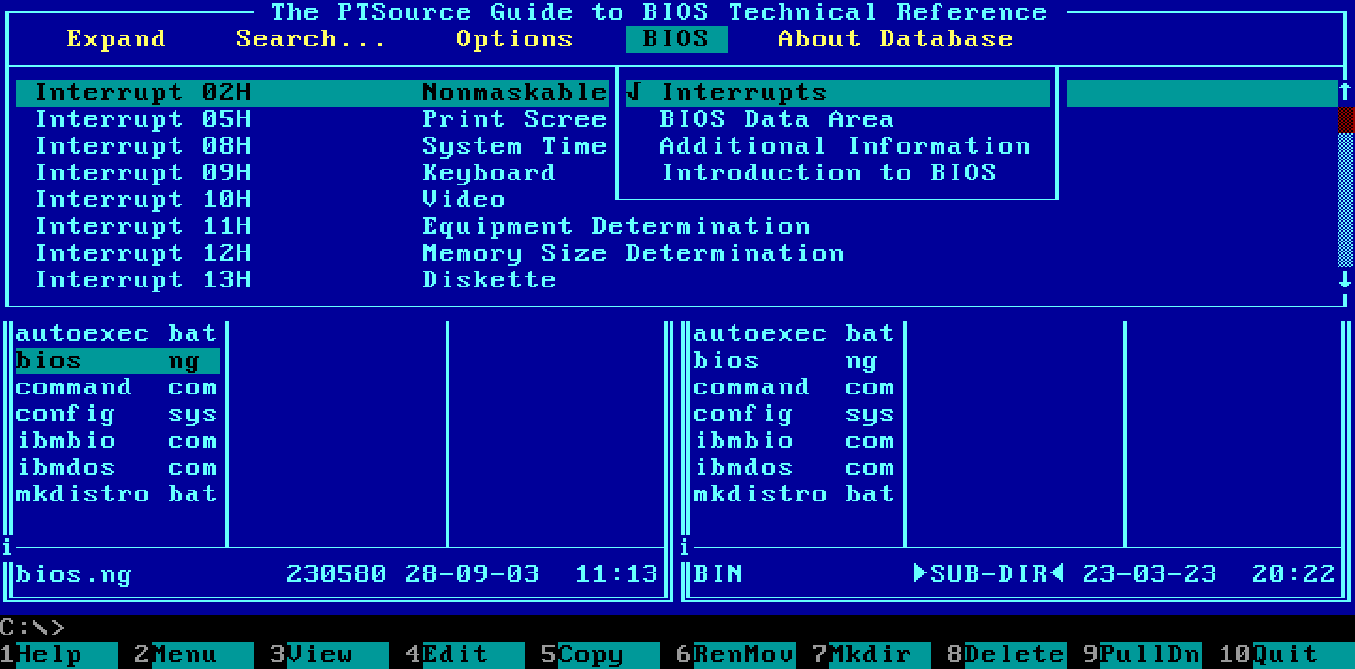
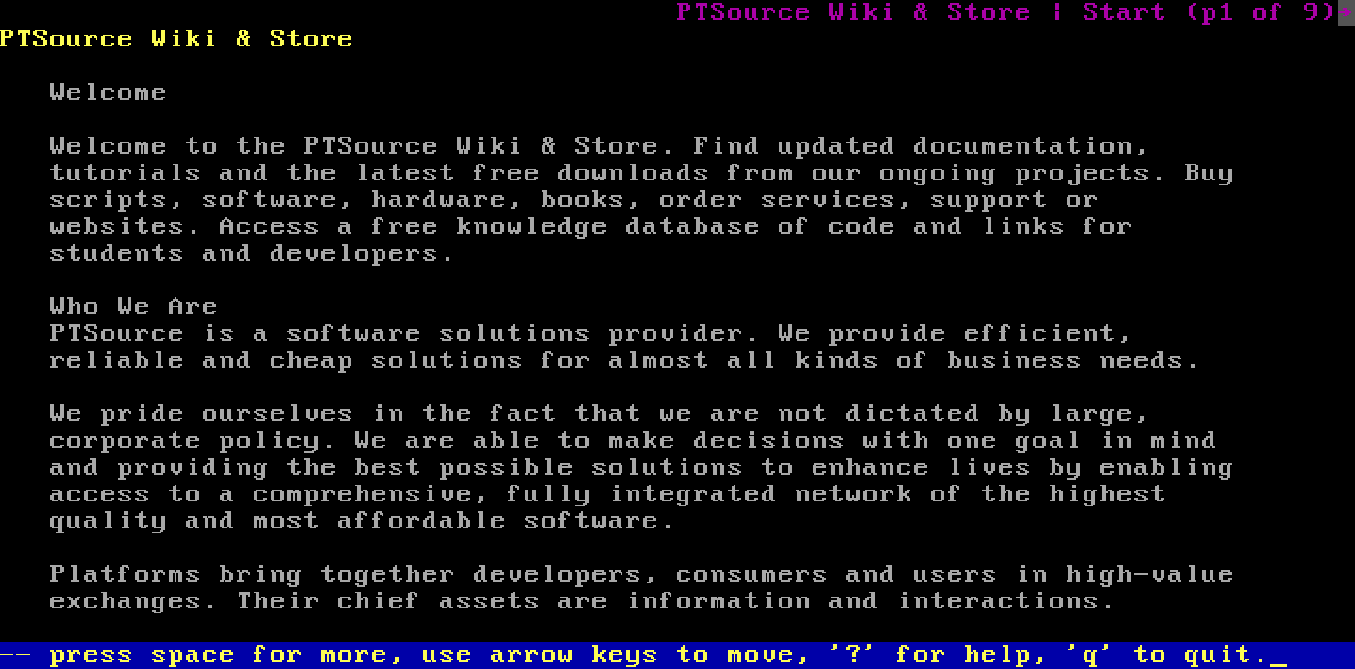
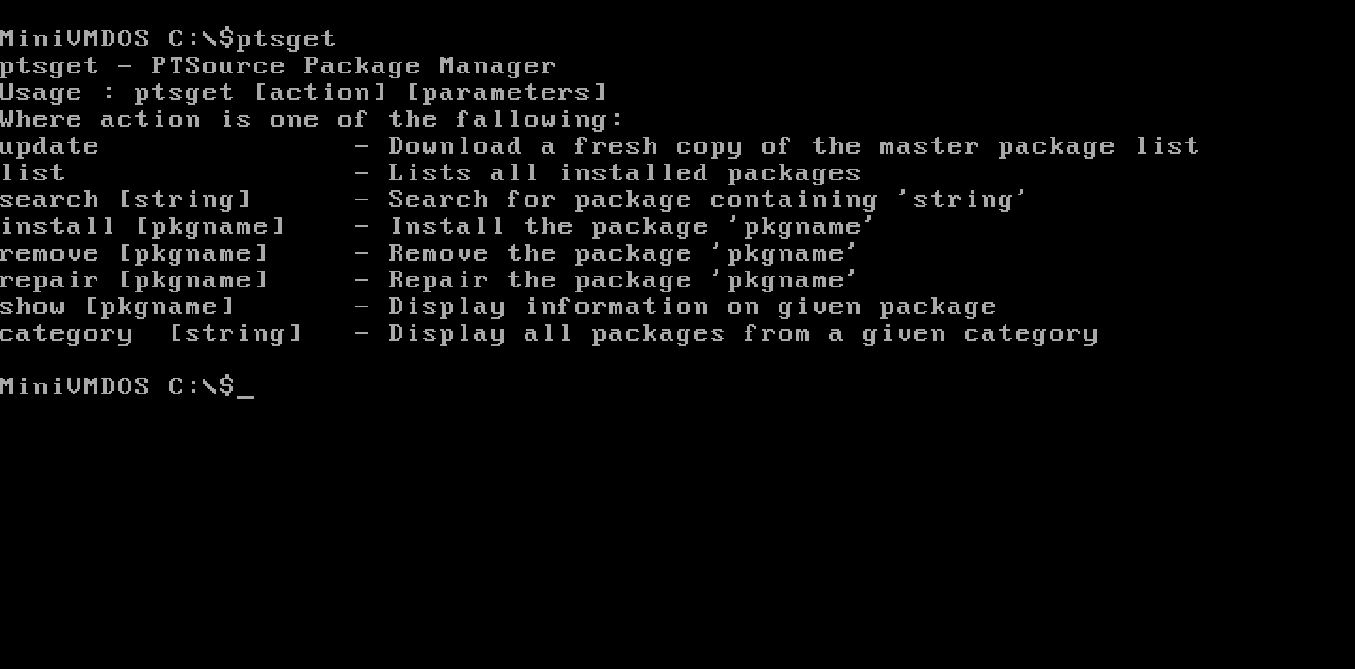
Tutorials
Hardware
- Intel Pentium Processor with MMX Technology 300 MHz, 66 MHz FSB
- 64Mb SDRAM
- Sound Blaster 16 Sound Card
- Ne2000 Network Card
- 2 Hard Drives
- 1 CDROM Drive (ISO Files)
- 2 1.44 Mb Floppy Drives (IMG, IMA, FDI Files)
Features
- Runs contained inside PTSource MiniVM
- PTSource PTSGET included
- Network support and multiuser environment
- Printing to Windows printers
- Transparent web and network access
- UNIX style commands
- VIM Editor with CTAGS and XXD
- MiniVMDOS Commander
- Bash
- PGP
- Dialog
- Lynx,WGET,FTP and more…
- Windows 3.11 Support
Info : Use login root and and password root in first login.
Download
Note : This software does not use a digitally signed installer, so you might get a warning. You should dismiss it and continue.
- Download the Installer.
- When Windows says the installer is not trusted, click “more info” and then “run anyway”.
- Follow the instructions in the installer.
- You can now launch the software from your desktop.
Note : Although this software is completely free a small download fee is applied to help us support hosting costs and help with development.